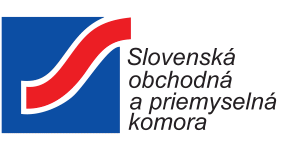Summary:
A Singapore MNE is seeking dry ingredients in a chocolate/fat-based filling system that can replace and has a similar mouthfeel to sugar, or ingredient technologies that can counteract such negative mouthfeel attributes. This is to meet a growing demand for lower fat and sugar products that do not compromise on mouthfeel, even with reduced fat and sugar levels. Partners with the above technologies or capabilities are sought for R&D collaboration, joint venture or license agreement.
Description:
Fat and sugar create the mouthfeel in food products that consumers love, but the growing demand for lower fat and sugar products has presented a significant challenge to achieve reduced sugar/fat/calorie content in chocolate and fat-based fillings that have good mouthfeel or texture.
Chocolate and fat-based fillings are suspensions of finely ground particles (e.g., sugar, milk powder, cocoa powder) in a continuous fat phase (e.g., cocoa butter and/or other vegetable fats). Standard chocolate and fat-based fillings have a continuous fat phase content of 27-32% (by weight), with the remaining 73-68% being finely ground particulates.
When chocolate or fat-based filling is chewed, the solid fat phase is physically broken down by the teeth, and begins to melt and mix with saliva. In standard chocolate, the particles' concentration (i.e., the extent of interaction with oral surfaces) and the properties of the particles (solubility, water binding/absorbing etc.) result in the classic chocolate texture.
If the fat content is reduced, the relative proportion of the particle phase will increase, leading to a greater extent of particle interaction with oral surfaces, resulting in a harder, more crumbly texture and drier/powdery mouthfeel.
If the sugar content is reduced and replaced with an alternative particle (e.g., soluble and/or insoluble fibre), then the fibres will have a greater, negative textural impact, even though the concentration of particles may not increase. For example, the fibres can mix with saliva and become sticky and, due to low solubility, can be perceived as rough or powdery.
If both fat reduction and sugar reduction are attempted simultaneously, then both issues are present.
Type (e.g. company, R&D institution…), field of industry and Role of Partner Sought:
The Singapore MNE is keen to partner MNEs/SMEs of any size with the above technologies or capabilities via the following types of partnerships:
i) Licensing - The Singapore company will license the technology from the partner to further develop it into new products and services to serve their customers' needs.
ii) Joint venture – Both the Singapore company and the partner will create a new entity together, for one specific project or a continuing business relationship to develop new products and services that address the needs of the Singapore company.
iii) Research Cooperation - Both the Singapore company and the partner will co-innovate to jointly develop new products and services that can address the needs of the Singapore company.
Technical Specification or Expertise Sought:
The solutions sought should meet the following specifications:
• Dry, particulate ingredients or dry ingredients that can be ground/milled to a particle state and used to replace granular sugar, in a chocolate/fat-based filling system that does not cause the above mouthfeel issues. Ideally, they would have in-mouth behaviour similar to sugar.
• Identify ingredient technologies that can counteract such negative mouthfeel attributes. For example, soluble fibre particles may be preferred from a nutritional perspective, but their water-binding properties cause the chocolate to become sticky in the mouth. Then what is sought is a technology to reduce the water-binding properties of soluble fibres to improve the application potential of soluble fibres.
• Present research capability and expertise in the area of food mouthfeel modification.
External code:
TRSG20210121001








